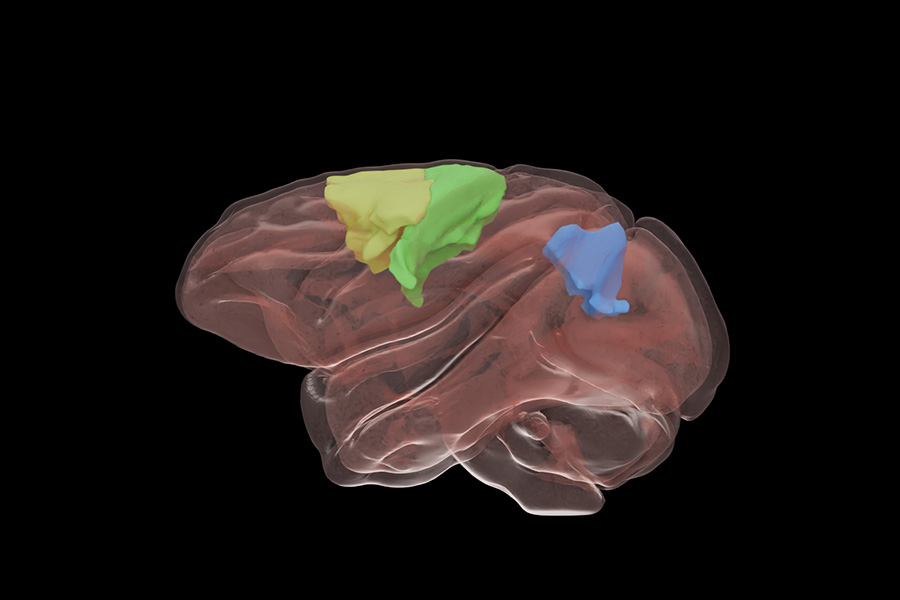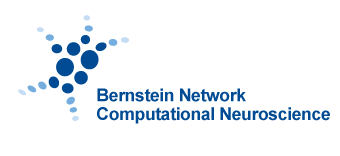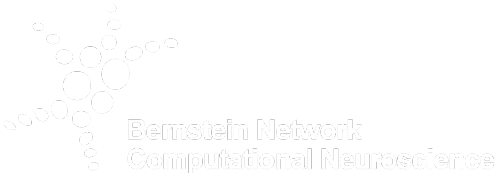Controlling prostheses with the power of thought
Researchers at the German Primate Center (DPZ) – Leibniz Institute for Primate Research in Göttingen have discovered that the brain reorganizes itself extensively across several brain regions when it learns to perform movements in a virtual environment with the help of a brain-computer interface. The scientists were thus able to show how the brain adapts when controlling motor prostheses. The findings not only help to advance the development of brain-computer interfaces, but also improve our understanding of the fundamental neural processes underlying motor learning (PLOS Biology).

Graphic representation of a rhesus monkey brain. The areas of the brain that play a role in controlling arm and grasping movements are marked in color. Yellow: premotor cortex, green: motor cortex, blue: medial intraparietal area. Photo: Vladyslav Ivanov, created with AFNI_25.2.18
Bernstein member involved: Alexander Gail
In order to perform precise movements, our brain’s motor system must continuously recalibrate itself. If we want to shoot a basketball, this works well with a familiar basketball, but requires extra practice with a lighter or heavier ball. Our brain uses the deviations from the expected (throw) result as an error signal to learn better commands for the next throw. The brain must also perform this task when it wants to control a movement via a brain-computer interface (BCI), for example, that of a neuroprosthesis. Until now, it was unclear which regions of the brain reflect the expected result of the movement (the trajectory of the ball), which reflect the error signal, and which reflect the corrected movement command that aims to compensate for the previous error.
To address these questions, the researchers examined motor learning in the brain regions of rhesus monkeys that are responsible for controlling arm and grasping movements. The frontal areas are responsible, among other things, for planning and executing movements by sending the corresponding signals to the muscles. Parietal brain regions play a key role in integrating sensory signals, especially visual signals, and thus help, for example, to determine the position of the movement target in space.
The rhesus monkeys were trained to move a computer cursor in a three-dimensional virtual environment using a BCI, solely through their thoughts. The activity of the nerve cell populations in the corresponding areas of the brain was measured. With the help of machine learning algorithms, the BCI continuously interpreted the animals’ brain activity patterns and translated them into movement. In this way, the researchers were able to modify the BCI algorithm so that the translation was systematically incorrect without impairing the animals’ natural movement abilities. The movement the animals saw on the screen did not correspond to the movement they had previously “thought” about. As a result, the monkeys had to repeatedly adjust their brain activity to compensate for these experimentally provoked errors. This allowed the researchers to study the learning process in the brain in detail.
The results show, in line with previous findings, that the brain can solve this task without restructuring its network connections. The brain falls back on an existing solution, i.e., a movement that is generally known to the brain, as if one were simply aiming in a different direction to correct the flight characteristics of the new ball. In other learning situations, the brain has to learn completely new movement sequences and, to do so, change or rewire nerve connections, which has not proven necessary in this case. This is desirable for neuroprostheses because it makes it easier to learn how to use them.
Surprisingly, according to the new findings, different regions of the brain jointly reflect the corrected movement commands, rather than, as previously assumed, one part of the cerebral cortex reflecting the movement command to the muscles and another part reflecting the predicted sensory consequence of this movement command. The latter describes an expectation of how one’s own movement will be experienced sensorily (seen and felt). In everyday life, these two components of movement control usually have very similar characteristics, making it difficult to distinguish between the brain regions responsible for them. The special experimental setup allowed these components to be separated and examined independently. The previously assumed division of functions between parietal and frontal brain regions has thus been found to be inaccurate.
“The study shows that the parietal part of the brain does not reflect the expected sensory consequence of movement, but rather a corrected motor command, as does the frontal area of the brain,” says Enrico Ferrea, lead researcher of the study. This was surprising, as parietal parts of the brain are better known for integrating sensory information from different sensory organs. This means that the cerebral cortex adapts extensively and uniformly to realign our movement planning to changing conditions.
“The study is an important step forward in our understanding of learning processes during movement planning and control,” says Alexander Gail, head of the Sensorimotor Research Group at the DPZ. “By understanding how the brain recalibrates movements, we can develop more effective prostheses to restore motor function in people with paralysis or other motor disorders.”





